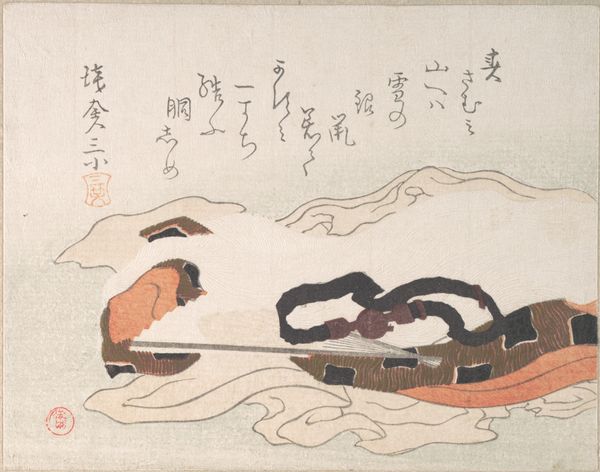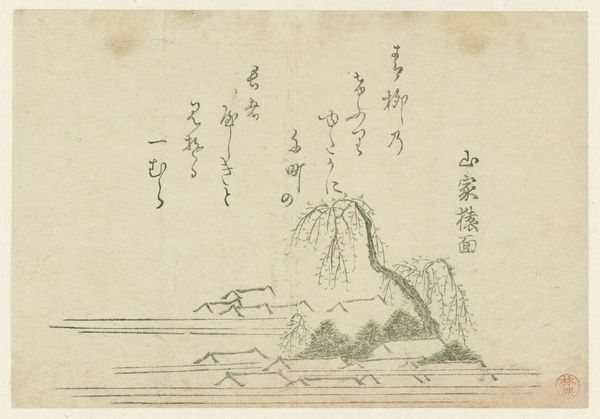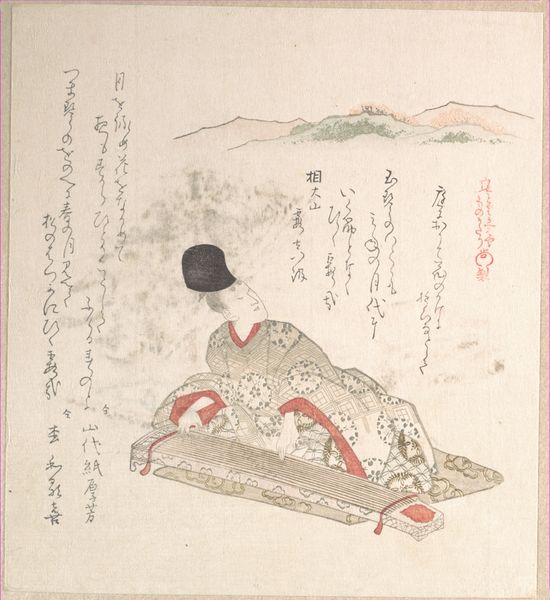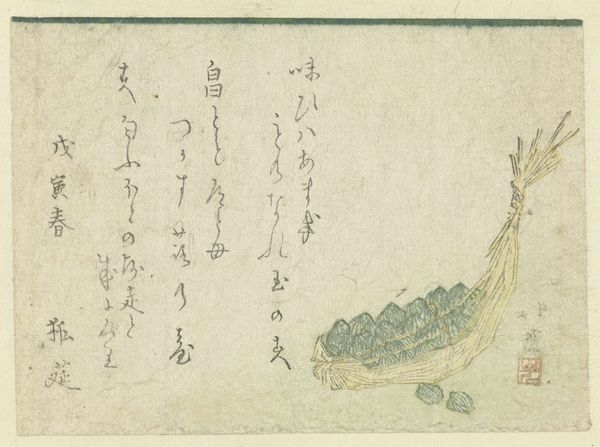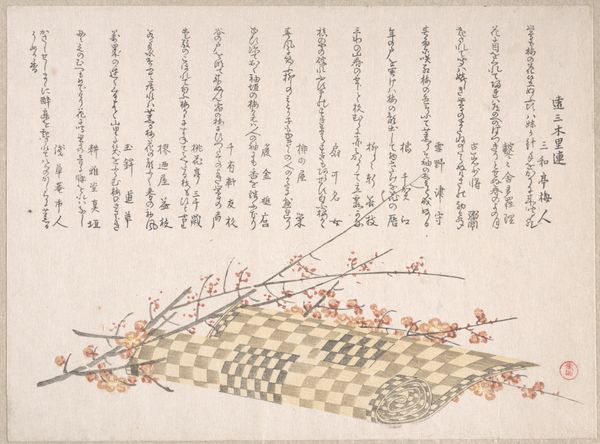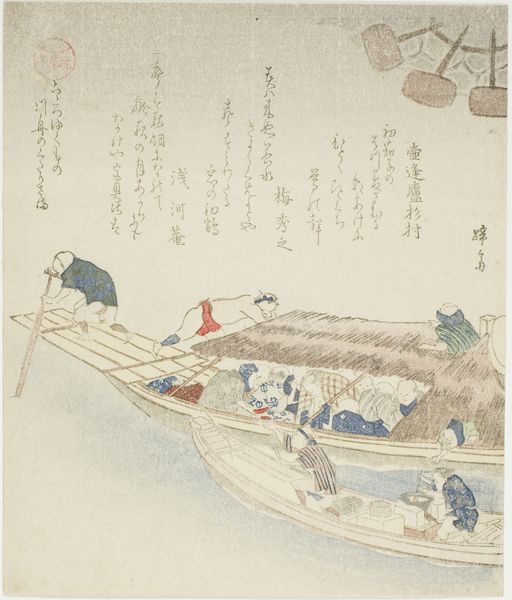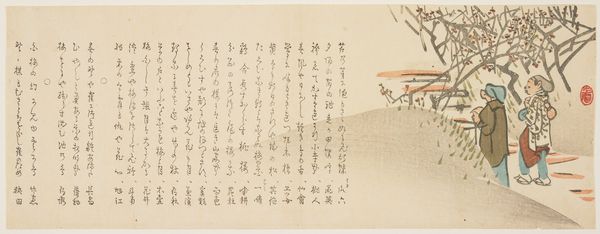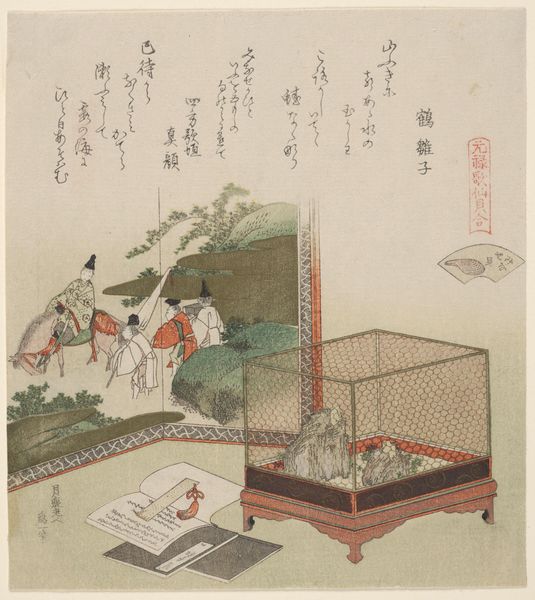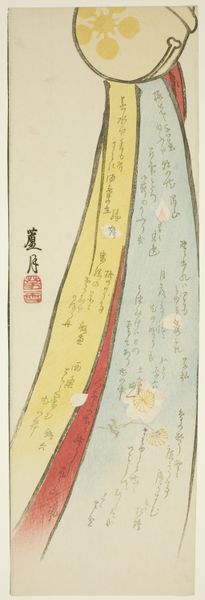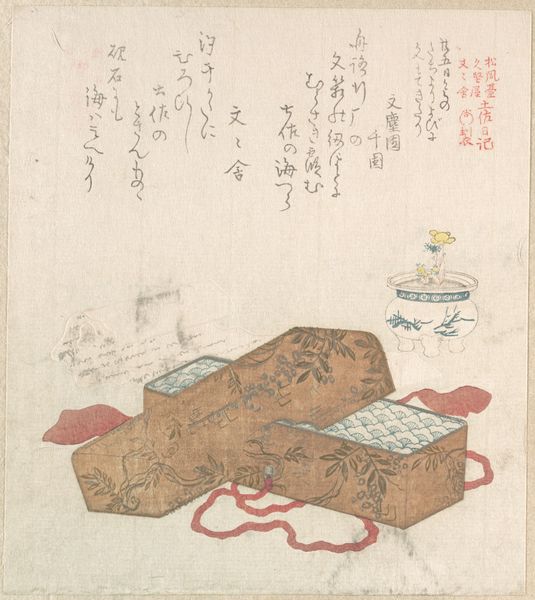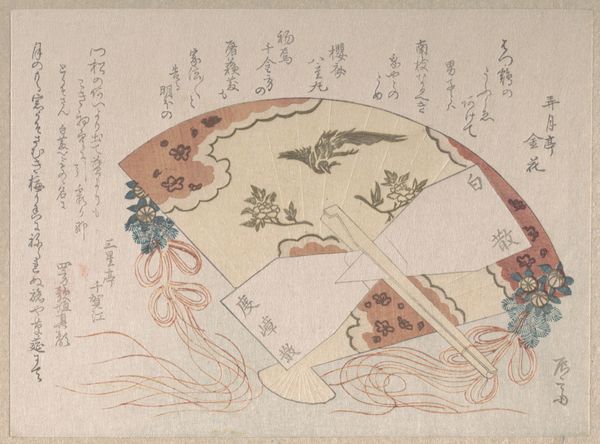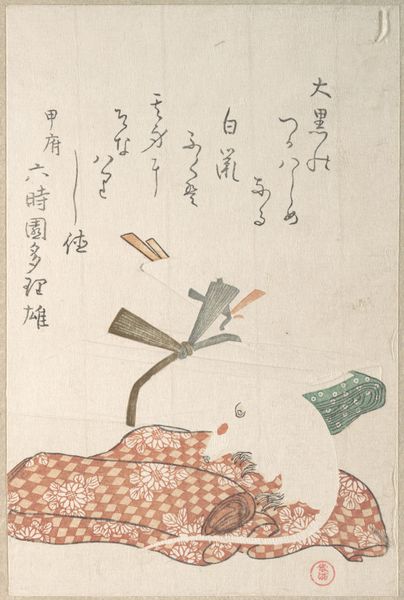
print, woodblock-print
#
toned paper
# print
#
asian-art
#
etching
#
ukiyo-e
#
woodblock-print
Dimensions: 8 x 7 3/16 in. (20.3 x 18.3 cm)
Copyright: Public Domain
Curator: There's a quiet elegance about this woodblock print; the pale hues and the delicate lines really evoke a sense of refinement. Editor: Yes, there's almost a fragile beauty. The scroll almost feels discarded, yet treated preciously somehow. What's its story? Curator: This is "Kakemono and Its Box," created in the 18th or 19th century by Kubo Shunman. What intrigues me most is the print's portrayal of not just the kakemono, the hanging scroll, but also its storage box. You can really analyze how this print questions the values ascribed to a final "artwork" as distinct from the other components inextricably entwined in its creation and use. The raw materials of wood and paper are evident. Editor: It challenges Western notions of "high art," especially within its original social context, doesn't it? Considering how the ukiyo-e style, traditionally, served the merchant class during the Edo period, and was not viewed by the elites as serious art. Presenting this complete ensemble offers a glimpse into the cultural and economic currents of the time. And, might I add, subverts traditional Western ideas about a precious object versus plain storage by treating them together on the same plane of importance! Curator: Precisely! You've really put your finger on one of its key facets, the means of production for viewing something beautiful. I mean, what does that reveal to us about our social dynamics? Editor: The added layer of calligraphy enhances this too. It weaves storytelling and cultural values seamlessly into the piece. Its text offers added social or political context of the item. Curator: It’s so very layered. You start considering the societal position of the merchant patrons, the labor involved in creating the scroll, the artisan involved. All these perspectives broaden our interpretation of Japanese aesthetics. Editor: This certainly shows how an image of an everyday object can become such an enduring artwork—one that holds open space for a multitude of complex social readings. It's much more than meets the eye. Curator: I agree. Studying works such as this opens a whole new perspective through which we consider and reassess the traditional cannon.
Comments
No comments
Be the first to comment and join the conversation on the ultimate creative platform.
